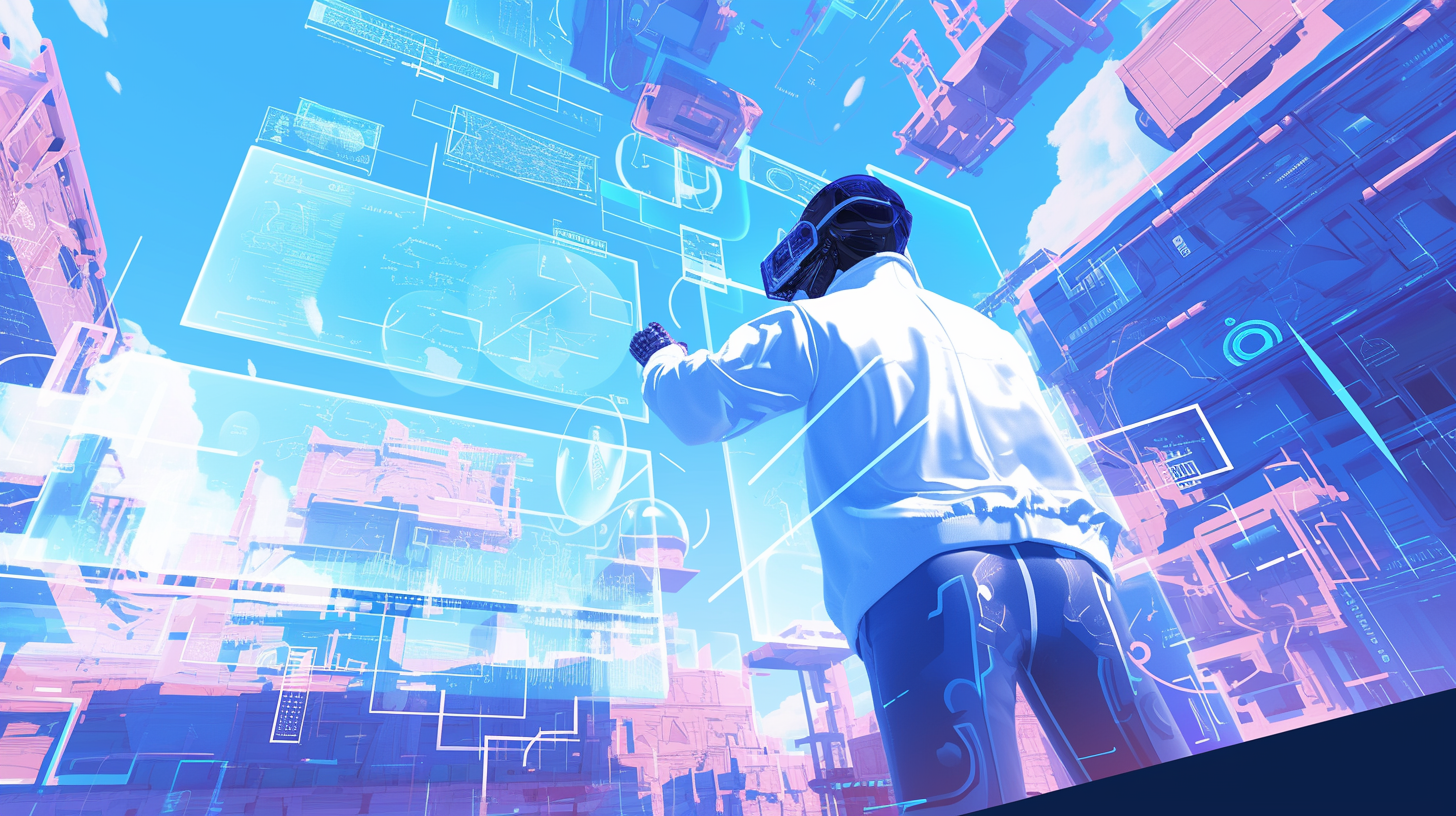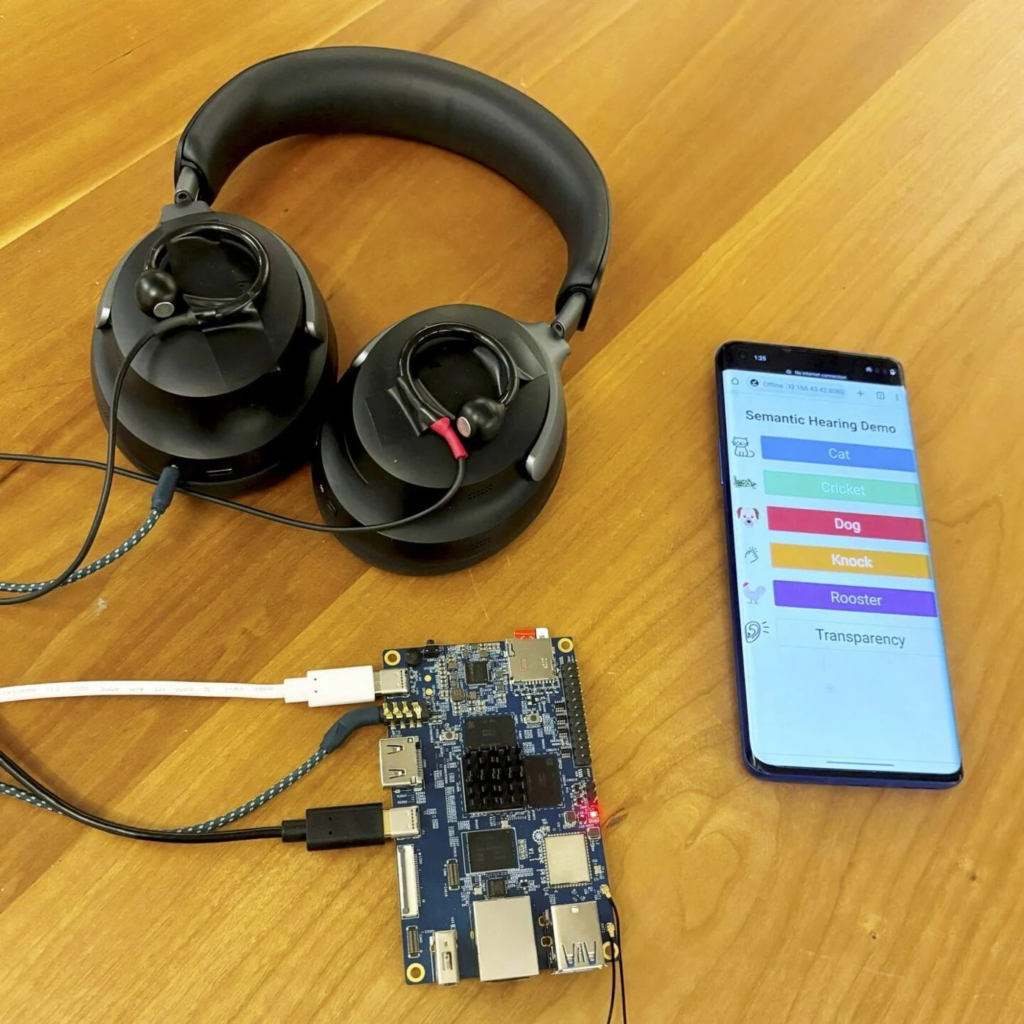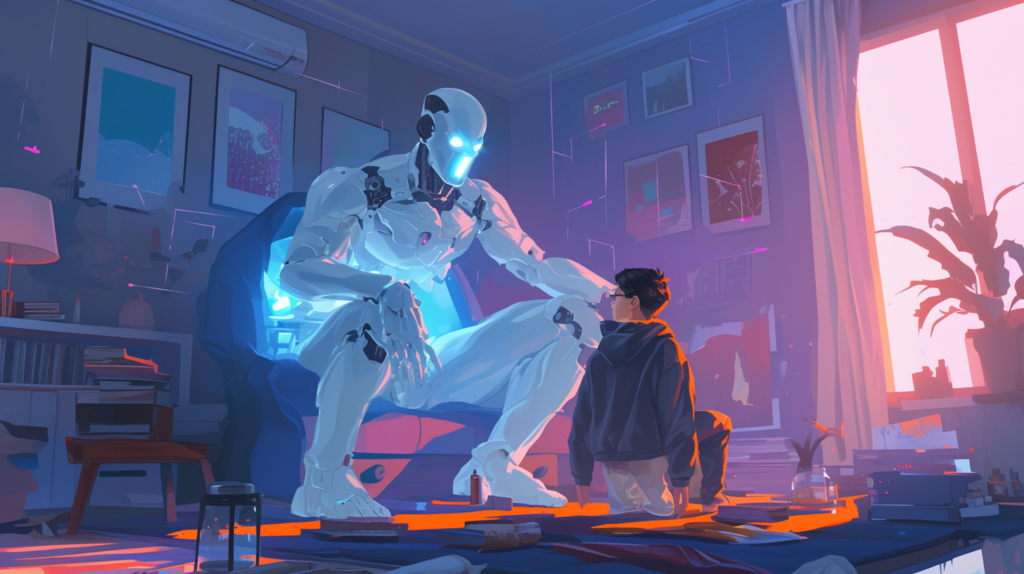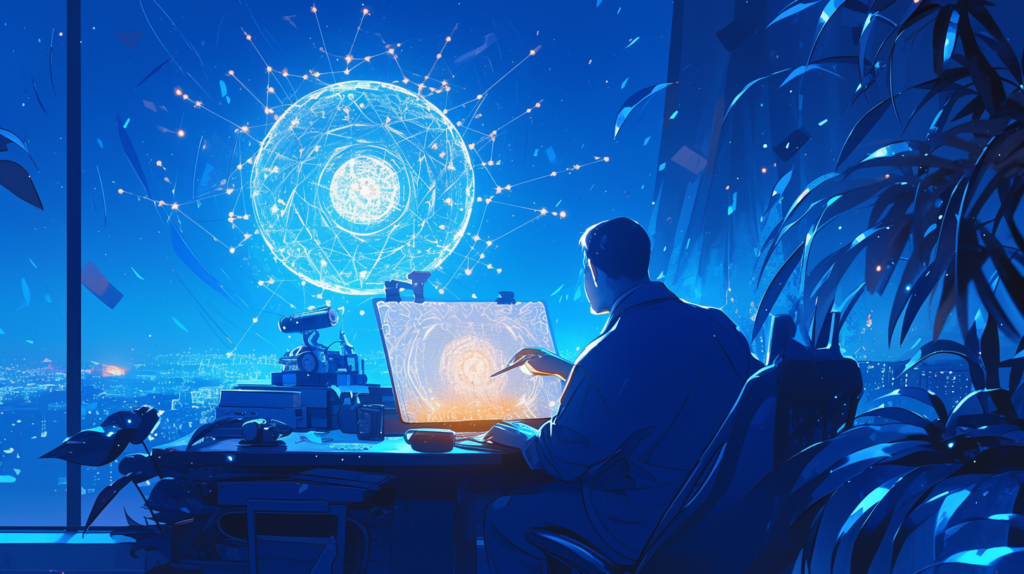
Are you ready to revolutionize your career as a designer?
Get ready for a wild ride, because Artificial Intelligence (AI) and Machine Learning (ML) are taking over the design world! As a designer, you might be thinking, “What does this mean for me?” Well, buckle up, because we’re about to dive into the exciting world of AI/ML design.
The Future is Now
Imagine headphones that can isolate individual sounds using AI/ML tech. Sounds like science fiction, right? But it’s not! This technology is already here, and it’s changing the game in various industries.
This groundbreaking AI-powered technology, developed by a team of researchers, enables users to focus on a single speaker’s voice in noisy environments. By enrolling a speaker through a simple process – gazing at them for 3-5 seconds while tapping a button on the headphones – the system captures sound signals and processes them using machine learning algorithms.

As a designer, you might be wondering what this means for your career. Well, let me tell you – this is an exciting time to be a designer!
Why Designers Should Care
AI/ML tech is no longer just a buzzword; it’s a reality that’s transforming various fields like healthcare, finance, education, and more. As a designer, you have the power to shape these innovations and create user-centered experiences that integrate AI/ML capabilities. But before we dive deeper into the world of AI/ML design, let’s take a step back and explore why this is such a big deal.

AI/ML tech has the potential to:
– Amplify creativity: By automating repetitive tasks and allowing designers to focus on high-level creative decisions
– Improve user experiences: By creating personalized interactions that are tailored to individual users’ needs and preferences
– Enable new forms of storytelling: By using AI-generated content to tell stories in innovative and engaging ways
– Improve traditional solutions: By taking what we already do well, and optimizing it further to be faster, more personalized and providing new avenues of innovation.
– Building new solutions: Some problems just could not be solved using our traditional technologies. As AI/ML tech becomes more mature and accessible, it opens the doors for us designers to create solutions to problems we previously could not.
Getting Started with AI/ML Tech: Resources for Designers
If you’re new to the world of AI/ML tech, it can be overwhelming to know where to start (I feel you. I’ve been there too!). That’s why I’ve curated some valuable resources (books, online courses, podcasts, etc.) that can help designers learn about AI/ML and its applications. Here are a few of my favorites:
“Applications Of Machine Learning For Designers“ by Smashing Magazine
“When Words Cannot Describe: Designing For AI Beyond Conversational Interfaces“ by Smashing Magazine
“A Designer’s Guide To The $15 Billion Artificial Intelligence Industry“ by Fast Company
Designing the New Age: A Framework for Designers

Now that you’ve got a basic understanding of AI/ML tech, let’s dive into the fun stuff – designing products and services that integrate AI/ML capabilities! Here’s a framework to get you started:
1. Understand the problem: Identify the challenge you’re trying to solve.
2. Practice “Blue Skies” Ideation: Now that you understand the problem, use the “Blue Skies” approach – which implies that you can imagine a solution with the assumption that there are no monetary and technology constraints. This is your “flare” stage. This will allow you to dream up solution that would traditionally be impossible (and that’s okay!).
3. AI/ML First Approach: Gone are the days of thinking mobile first, now, you’ll need to think AI/ML first. Assuming you understand the delicacies of AI and ML tech, look at how this type of tech can assist in accomplishing your dream solution.
4. Recognizing Limitations: AL/ML tech is quite young, and it comes with its own limitations. This is your “focus” stage. Understand the limitations, and re-adjust the specs of the final solution to fit within whats reasonably possible.
5. Identify Delivery Mechanism: As time passes, users will desire lesser interaction, easier access and faster turn-around times. Identifying the best way to deploy your solution will be key to future-proofing your offering. Less is more, fast is too slow.
Additional considerations:
– AI vs ML: While the two areas of tech are quite interconnected – they are inherently different. It will be important for you to understand at least some basics on these differences to be able to select the tech implementation that provides the least overhead.
– Pre-trained vs Custom: When it comes to AI technology, you have quite a few options these days. I would recommend looking into a variety of them to understand their pros and cons. Remember, you don’t have to go deep into the tech, but understanding the fundamentals will help you select the right AI tech stack. For example, if you just need conversational AI, and are not worried about privacy, your solution could be simply using an OpenAI API. However, if your use case is very custom, and you are concerned about security – you may need to train your own LLM model.
– Ethical implications: We’re designer, we constantly worry about the ethical implications of our creations. Consider the ethical implications of AI-driven design and ensure that it aligns with your values and those of your organization. If you’re like me, you’re also considering how your AI/ML creations could effect the world as a whole – and while this seems “nerdy“, it is critical that we do.
Conclusion
As designers, we have the power to shape the future of design. With AI/ML tech on the rise, it’s more important than ever to stay curious, continuously learn about AI/ML innovations, and adapt your skills to meet this new reality. So, what are you waiting for? Get started today and join the revolution!
Bonus Materials:
AI/ML Design Resources: Check out these awesome resources to help you get started with AI/ML design:
My Newsletter (Shameless Plug!)
Artificial Intelligence: A Modern Approach
By providing more educational resources, a detailed framework for designing with AI/ML tech, and emphasizing the importance of staying curious and adapting to new developments in this space, I hope to inspire and empower designers to take on the exciting challenges and opportunities presented by AI/ML tech.
 The Future of Design: How Designers Should Create AI/ML Products
The Future of Design: How Designers Should Create AI/ML Products